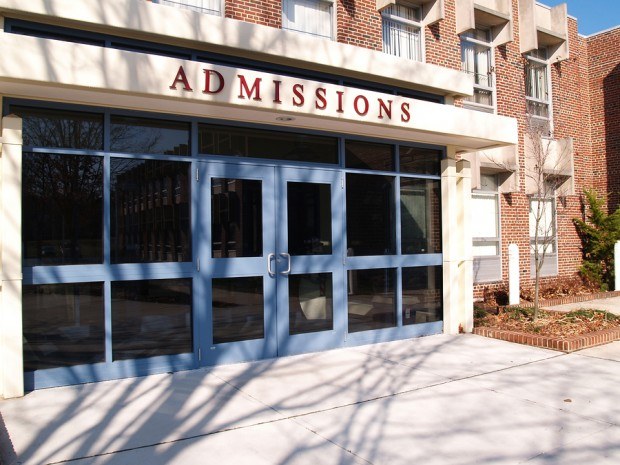The U.S. Supreme Court’s decision on affirmative action may force universities to re-examine their admissions policies and face waves of litigation about race-based admission.
In a 7-1 ruling Monday, the justices ordered a federal appeals court to scrutinize again the University of Texas at Austin’s affirmative-action program. While leaving intact a 2003 decision that reaffirmed the right of colleges to use race in admissions, the majority told the lower court to rule on whether the school had exhausted “race-neutral alternatives.”
Even as civil-rights leaders hailed the court for preserving affirmative action, colleges will be under pressure to justify their programs under the ruling and may find that the decision emboldens other spurned students to sue, legal scholars and university officials said. More schools may choose to use income and other measures to attract a broad array of students, said Richard Kahlenberg, a senior fellow in Washington with the Century Foundation, a public policy research group.
“It will have a big impact,” said Kahlenberg, whose research supports the use of family income, rather than race, in admissions. “Universities will have to be very careful before they resort to racial preferences.”
Such measures are bound to fall short, based on the experience of the University of California and other systems that have tried them, Lee Bollinger, president of Columbia University in New York, said in an interview.
Less Effective
“You will not get the degree of racial and ethnic diversity that we need for the educational benefits we seek by only focusing on low-income applicants,” said Bollinger, who as president of the University of Michigan in the late 1990s and early 2000s led the defense of its affirmative action programs in the 2003 case.
Affirmative action has been a fixture on U.S. campuses since the 1960s, diversifying what had been many virtually all- white student bodies. Most of the nation’s selective colleges and professional schools consider race as they seek to ensure a multiracial student body. Blacks and Hispanics now make up more than a quarter of U.S. college students.
The University of Texas admits three-quarters of its freshman class each year on the basis of high school class rank — the “top 10 percent” rule. That system, while race-neutral on the surface, ensures a significant number of minorities because it guarantees slots to students at predominantly Hispanic and black schools.
Majority View
The university considers race only in admitting the rest of the class. Opponents of preferences say that’s unnecessary, given the success of the class-rank method. Texas counters that even with race-based admissions, a high percentage of its classes have few if any black and Hispanic students.
Justice Anthony Kennedy, writing for the majority, said that while courts should defer to universities in determining whether diversity is essential to their educational mission, judges should closely scrutinize the means schools use to bolster minority enrollment.
“The university must prove that the means chosen by the university to attain diversity are narrowly tailored to that goal,” Kennedy wrote. “On this point, the university receives no deference.”
Richard Sander, a law professor at the University of California, Los Angeles who has been critical of affirmative action, said Kennedy’s language calling for facts supporting the use of race could set up universities for legal battles.
‘Low Bar’
“He’s setting a very low bar for future litigation,” Sander said in a phone interview.
The University of Texas said the ruling won’t force any immediate changes in its admissions policies. University President Bill Powers said in a statement that the system “fully satisfies” the standards laid out by the Supreme Court.
Civil-rights groups hailed the decision, saying it represents a victory for equal opportunity.
The court set a “sharper and tighter” standard for using race in admissions, said Sherrilyn Ifill, president and director-counsel of the NAACP Legal and Educational Fund.
“The University of Texas can meet it,” Ifill said in a briefing with reporters. “Other universities can meet it as well.”
University of Texas students overwhelmingly support the school’s admissions policies, Student Body President Horacio Villarreal III said in a phone interview. He cited a vote last year in which 35 members of the student government unanimously supported a resolution praising the admissions standards.
Student Support
“The whole university benefits from a diverse student body,” said Villarreal, 22, a political science major and rising senior from Corpus Christi, Texas. “We are doing things the right way.”
The 2003 decision, Grutter v. Bollinger, said colleges and graduate schools could consider race as long as they do so through a broad review of a student’s application and don’t mechanistically award extra points to every minority.
Affirmative action has “been a very important part of the great success of American education that is admired around the globe,” Bollinger said. “It would be great pity to retreat at this stage when the work is not over.”
The Texas policy was challenged by Abigail Noel Fisher, who applied unsuccessfully to the Austin campus in 2008 and later enrolled at Louisiana State University. A graduate of a Houston- area public high school, she said she was passed over by UT in favor of minority classmates with lower grades and fewer extracurricular activities.
Corporate Backing
Texas had support in the case from some of the nation’s most powerful institutions. Fifty-nine companies—including Microsoft Corp., Wal-Mart Stores Inc., Gap Inc., General Electric Co., Pfizer Inc., and Viacom Inc.—filed a brief saying they rely on universities to prepare a racially diverse workforce.
“People educated in diverse settings are better equipped to make the kinds of valuable contributions to the workforce that result from exposure to a variety of viewpoints and backgrounds,” Seth Martin, a spokesman at Fairfield, Connecticut-based GE, said in an e-mail.
Yesterday’s decision will intensify the debate between people who say affirmative action is crucial for recruiting disadvantaged minorities and those who argue that targeting low- income families or those who haven’t attended college can be equally effective.
Justifying Programs
Colleges are going to have to make sure they can justify their affirmative action programs, according to Ada Meloy, general counsel of the American Council on Education, a Washington nonprofit group representing more than 1,800 college presidents. The move “may accelerate” efforts to use income, rather than race, to recruit diverse classes, she said.
In a report last year, the Century Foundation examined states such as Washington, Florida and Arizona that had eliminated racial and ethnic preferences at public universities because of voter referenda, executive orders or legislative actions. Seven of 10 institutions were able to produce as much or greater black and Hispanic representation using race-neutral means, such as family income, Kahlenberg said.
Yet, officials at the University of California say their efforts have fallen short. Since highly selective UC Berkeley stopped considering race in admissions for undergraduates in the 1998-1999 school year, the percentage of blacks enrolled fell by half to 3 percent in the 2012-2103 period. The percentage of Hispanic students held steady, at 13 percent, though their population has been increasing.
‘Limited Success’
Since the ban, the University of California expanded its outreach to high schools in pursuit of students from low-income families or those with little or no experience with higher education. It also decreased the weight given to standardized tests and admitted a specific number of top graduates from each high school — a plan similar to Texas’s “top 10 percent” program, the system’s lawyers wrote.
Still, those measures “enjoyed only limited success” because they haven’t reversed the “precipitous decline in minority admission and enrollment,” the University of California wrote in a brief supporting Texas.
Admissions directors say they are confident their current programs operate in sync with the law and would survive any legal challenge.
“We have had our processes reviewed by independent sources,” said Tom Parker, dean of admission and financial aid at Amherst College in Massachusetts. “We will continue to do what we’ve always done.”
Massachusetts Institute of Technology has always considered “multiple forms of diversity,” according to Stuart Schmill, dean of admissions at the Cambridge, Massachusetts school.
“I don’t see us doing anything different now,” Schmill said.
The case is Fisher v. University of Texas at Austin, 11-345.
With assistance from Bob Drummond in Washington, Mary Camille Izlar and Leslie Picker in New York and David Mildenberg in Austin. Editors: Lisa Wolfson, Chris Staiti





















 Munich Re Specialty Launches FAIR Plan Commercial Wrap Product in California
Munich Re Specialty Launches FAIR Plan Commercial Wrap Product in California  Uncertainty Keeps Prices Up; No Prior-Year Loss Development: Travelers
Uncertainty Keeps Prices Up; No Prior-Year Loss Development: Travelers  Progressive Gains as Drivers Shop Around for Auto Insurance—Again
Progressive Gains as Drivers Shop Around for Auto Insurance—Again  Executives on the Move at AIG, White Mountains, Vermont Mutual
Executives on the Move at AIG, White Mountains, Vermont Mutual 